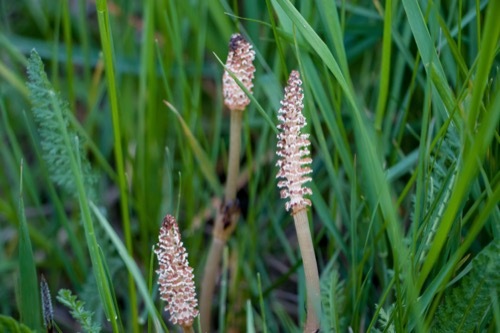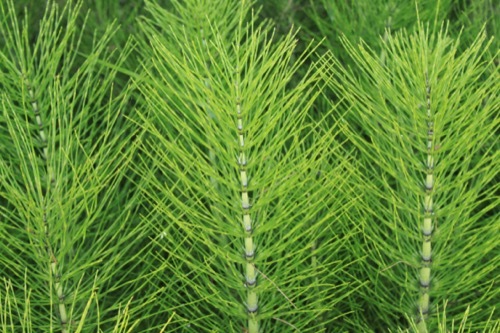What Is Horsetail?

Horsetail or Field Horsetail (Equisetum arvense) is one of the older surviving weeds that homeowners and gardeners are still dealing with today. These tall, feather-topped, perennial weeds have lived on without many changes for thousands of years now, and their stubborn hardiness seems to indicate that they will be around for even longer.
The first step to getting rid of horsetail is to properly identify it. This will ensure any steps you take to eliminate this weed will be the most effective they can be.
Horsetail Height and Shape
Horsetail grows in two distinct forms throughout its growing season, so the look of the plant may be different depending on when you are identifying it.
The first version of a horsetail stalk grows to a height of 8-12 inches in the early spring. These brown, leafless stalks will be topped with a spore-bearing cone that resembles the tip of an asparagus stalk in shape. This cone distributes spores for germination of the plant, and the stalk will die soon after the spores have been shed.
Later in the season, a taller, hollow-stemmed stalk will emerge with the familiar feathery top. These can grow up to two feet high. The horsetail brush has been used for its abrasive nature as a cleaning element throughout history.
Horsetail Roots
The rhizome root system of a horsetail weed can grow as deep as six feet underground, depending on the density of the soil where it takes hold. The horizontal spread of horsetail rhizomes is the primary means by which these weeds spread.
Leaves on Horsetail

Only the second "feathered" form of horsetail weeds have leaves that perform photosynthesis. These thin, green, feathery leaves fan out from a central stalk in a triangular brush-like shape.
When Does Horsetail Grow?
The spore-bearing stalks of a horsetail weed will appear in the early spring. These will die off soon after distributing the spores from their asparagus-like stalk tips. Later, throughout the summer months, the second form of horsetail stalks will sprout and grow. These taller stalks will remain viable until the first frost later in the year.



